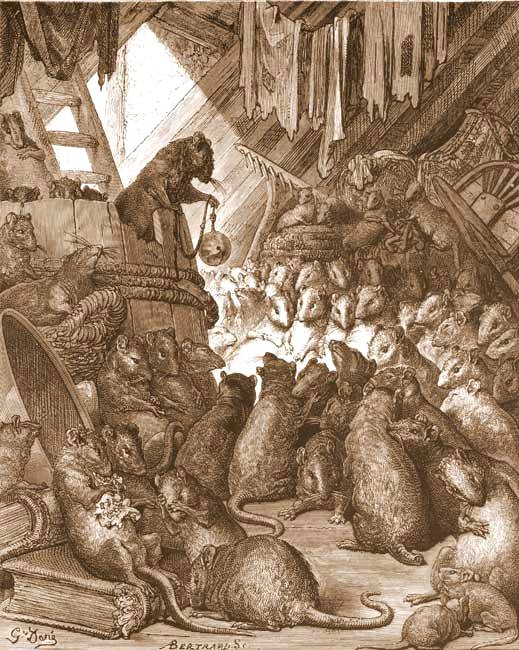
The Mice in Council, La Fontaine’s Fables
In La Fontaine’s fable The Mice in Council (also known as Belling the Cat), a group of mice convenes to solve the problem of a predatory cat. They agree on a brilliant solution: tying a bell around the cat’s neck to hear it coming. However, when asked who will actually perform the task, no mouse is willing to take the risk.
This fable is a classic collective action problem and can be analyzed using game theory, particularly in the context of public goods, coordination games, and the volunteer’s dilemma.

The mice all share the same goal: reducing the threat of the cat. But the challenge is implementation—no single mouse wants to bear the cost of action (tying the bell), despite everyone benefiting if someone else does it.
This parallels climate change mitigation, where countries (or individuals) agree that action is necessary but hesitate to take costly measures themselves.
The fable reflects a volunteer’s dilemma, where at least one player must make a costly sacrifice for the group to benefit.
This mirrors real-world climate negotiations, where countries hope others will reduce emissions first while they enjoy the benefits.